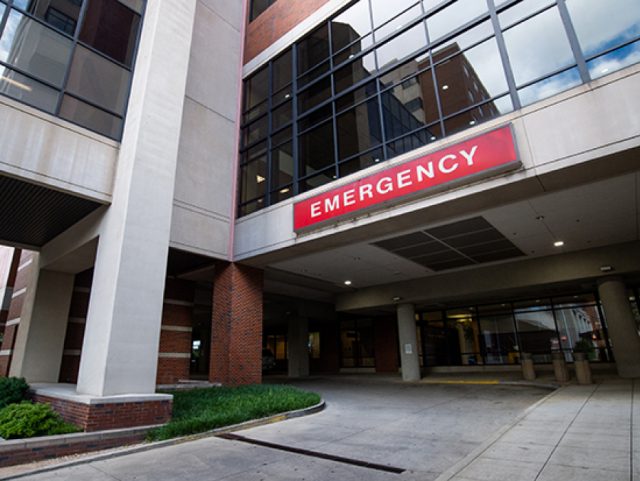By Ryan Michaels
The Birmingham Times
Emergency rooms in the Birmingham area are beginning to fill up, and doctors are urging people to visit primary care doctor offices or a clinic and only come to the ER with life-threatening symptoms.
While around 450 patients would make a busy day for each of University of Alabama at Birmingham’s three emergency departments, 617 came in Tuesday, and the departments are struggling for space and personnel, said Bobby Lewis, M.D., D.M.D, who serves as the vice chair for clinical operations at UAB’s Department of Emergency Medicine
In the last 10 days, Lewis said the COVID-19 infection rate in the Birmingham area has “ramped up” with the new Omicron variant, which is very contagious and has led to increased emergency department visits.
“Anytime you overload a system, things are going to get missed. Things will happen,” Lewis said. “We can’t do the best care for that number of people.”
Instead of overcrowding the emergency departments, Lewis encouraged people to visit a primary care doctor’s office, a clinic or one of the freestanding emergency departments.
“We definitely don’t want to get the idea that we can’t take care of everything that shows up, but we certainly want to make sure that you’re getting the best care and the proper care for the location that you’re going,” he said to patients considering an emergency department visit.
During a Zoom press conference Wednesday, Lewis said he and everyone at UAB want patients to receive the most appropriate care for their situation and that emergency departments often don’t provide tests for asymptomatic COVID cases or treatment for mild symptoms.
To find out where to go to receive non-emergency care, Lewis said residents can call hospitals like UAB, which can point them in the direction of health care providers who are appropriate for a patient’s needs. Primary care providers and urgent care facilities are often good first-stops, he said.
Symptoms that demand emergency department visit include persistent cough; uncontrollable, high fevers; nausea and vomiting; and most importantly, shortness of breath.
“Obviously, anybody who is short of breath is a concern because that’s been one of the big things that we’ve seen,” Lewis said.
“Fortunately,” Lewis said, “[Omicron] doesn’t tend to produce as severe illness in most folks, so this huge number of people that are getting infected is what’s really causing this surge that we’re seeing . . . .”
Even though Omicron is less likely to lead to hospitalization than the previous dominant variant, Delta, the number of infections in residents and in hospital staff will likely lead to strain on hospitals in the area, similar to earlier points during the pandemic, according to a Jefferson County Department of Health, PowerPoint presentation.





